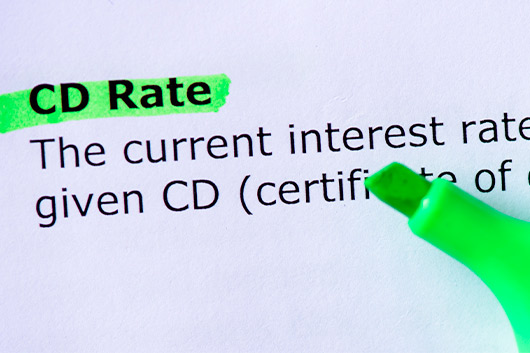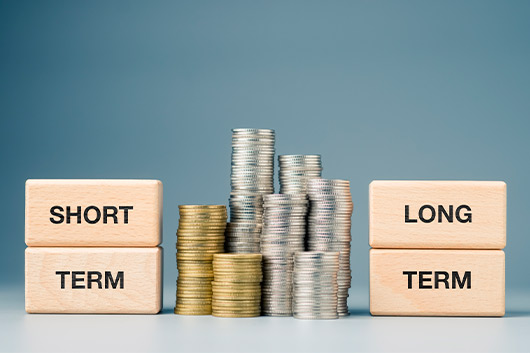September 25, 2025
Current CD Rates in Texas: What’s Trending
For savers in McAllen, Weslaco, Edinburg, and the broader Rio Grande Valley, a certificate of deposit offers a bright spot in today’s financial landscape. Current CD rates in this region typically range from around 3.5% APY for shorter terms to as high as 5% APY for longer-term CDs. These rates significantly outpace the national average of 2.02% APY for 1-year CDs, with Texas institutions often offering rates closer to the competitive Bankrate partner average of 3.98% APY.
The recent Federal Reserve rate cut to a range of 4.00% to 4.25% is likely to impact CD rates across the board, including in the Rio Grande Valley. This makes understanding the current CD environment especially important for Texas savers looking to lock in favorable rates before potential further decreases.
Several factors influence CD rates in the Rio Grande Valley:
- The competitive landscape among local financial institutions drives rates up in certain markets
- Regional economic conditions, including the strong Texas economy, support higher-than-average rates
- Online banks typically offer higher yields than brick-and-mortar institutions, providing additional options for Rio Grande Valley residents
- Local credit unions often feature competitive rates due to their member-focused structure
For Rio Grande Valley residents, this favorable rate environment presents an excellent opportunity to secure returns that not only beat inflation but also provide guaranteed growth. At Greater State Bank, residents in McAllen, Weslaco, and Edinburg can access some of the best CD rates in Texas, combining stability with competitive yields.
Short-Term vs. Long-Term CDs: Pros, Cons, and Trends

Short-Term CDs: Flexibility First
Short-term CDs typically range from three to twelve months and are currently offering competitive rates in Texas. These shorter commitments don’t necessarily mean sacrificing significant returns.
- Pros: Greater flexibility with sooner access to funds, ideal for near-term financial goals, and better positioning if interest rates are expected to continue rising
- Cons: Generally lower interest rates than longer-term options, and require more frequent renewal decisions
Long-Term CDs: Maximizing Returns
Long-term CDs, typically ranging from one to five years, reward patience with higher rates. For Texans looking to maximize returns without market risk, these options can be particularly attractive if you believe rates will fall in the coming months or years.
- Pros: Lock in higher interest rates for extended periods, protection against falling rates, potential to outpace inflation
- Cons: Reduced access to funds, steeper early withdrawal penalties, and missed opportunities if rates increase
Current Trends in Texas CD Rates
As of September 2025, CD rates in Texas remain attractive despite recent Federal Reserve rate cuts. The gap between short-term and long-term CD rates has narrowed, with some shorter-term options now offering comparable or even higher rates than their long-term counterparts.
| CD Type | Typical Rate Range (Texas) | Best For | Current Trend |
| Short-Term (3-12 months) | 3.95%-4.50% APY | Near-term goals, rate flexibility | Highly competitive, outperforming historical patterns |
| Long-Term (1-5 years) | 3.85%-4.30% APY | Rate protection, maximum growth | The premium for longer terms has decreased |
With the Federal Reserve’s recent rate cut and projections for additional cuts later this year, now might be an opportune time for Texas savers to lock in rates, especially on longer-term CDs, before they potentially decline further. While many residents search for State Bank of Texas CD rates, Greater State Bank delivers competitive options right here in McAllen, Weslaco, and Edinburg, helping customers maximize their savings close to home.
Maximizing Returns with CD Laddering Strategies

But what exactly is CD laddering? Simply put, it’s a systematic approach to investing in multiple CDs with different maturity dates, creating a “ladder” of investments that mature at regular intervals. This strategy provides both ongoing liquidity and the opportunity to reinvest at potentially higher rates.
- Divide your savings. Split your total investment amount across multiple CDs with different term lengths. For example, if you have $20,000 to invest, you might divide it into four $5,000 CDs.
- Stagger your maturities. Purchase CDs with different term lengths, perhaps 6 months, 1 year, 18 months, and 2 years, creating regular maturity dates.
- Research Texas institutions. Compare rates at local banks, as well as credit unions.
- Consider online banks. Don’t overlook online institutions offering high rates. as high as 4.45% APY for certain terms.
- Reinvest at maturity. As each CD matures, either access the funds or reinvest in a new, longer-term CD to maintain your ladder structure.
The benefits of this approach are particularly valuable in Texas’s current fluctuating rate environment. CD laddering provides consistent liquidity while allowing you to capitalize on higher rates typically offered by longer-term CDs. Additionally, it helps mitigate interest rate risk. If rates rise, you’ll have regular opportunities to reinvest at better rates; if they fall, portions of your savings will still be locked in at previously higher rates. At Greater State Bank, our CD laddering options allow Rio Grande Valley residents to combine flexibility with some of the best CD rates in Texas.
How Do CDs Stack Up Against Other Savings Options?
When evaluating where to place your hard-earned money in Texas, it’s essential to understand how certificates of deposit compare to other savings vehicles. While CDs currently offer attractive rates in the Rio Grande Valley, they aren’t the only option for growing your savings.
· High-yield savings accounts
Provide maximum flexibility with no withdrawal penalties, making them ideal for emergency funds or savings you might need to access quickly. Though they typically offer lower rates than CDs, they still provide yields nearly matching shorter-term CDs. The key advantage is liquidity. You can withdraw funds anytime without penalty, unlike with CDs.
· Money market accounts
Represent a middle ground, offering slightly higher interest than traditional savings accounts along with limited check-writing privileges. While MMAs provide more accessibility than CDs, they generally don’t match the returns of a well-structured CD ladder in today’s rate environment.
· Treasury securities
Another alternative, offer government backing and potential tax advantages (exemption from state taxes), which can benefit high-income Texas residents. However, these require longer commitments than savings accounts and offer less liquidity.
When CDs Make Sense for Texas Savers:
Certificates of Deposit (CDs) can be a smart move for Texans looking to grow their savings safely. They work best when you have a clear financial plan and can commit to leaving your money untouched for a set period. Here are a few situations where choosing a CD may align with your goals:
- You have funds you won’t need to access for a specific time period
- You want guaranteed returns without market volatility
- You’re saving for a specific goal with a defined timeline (home down payment, education expenses)
- You want to lock in current rates before potential further Fed rate cuts
- You’re looking to diversify your overall savings strategy
When Other Options Might Be Better:
CDs aren’t ideal for every saver. In some cases, a more flexible or growth-oriented option may suit your needs better. Consider alternatives if:
- You need an emergency fund with immediate access
- You believe interest rates will rise significantly in the near future
- You’re unsure about when you’ll need the funds
- You’re seeking potentially higher returns and can tolerate some risk
- You want to make regular deposits to your savings (consider add-on CDs or savings accounts)
For Texas residents, the decision ultimately comes down to your financial goals, timeline, and liquidity needs. Many savers benefit from a diversified approach, keeping emergency funds in high-yield savings accounts while using CDs for longer-term goals where the higher, guaranteed rates provide peace of mind.
Breaking a CD Early in Texas: Penalties and What to Consider

Common Penalty Structures in Texas
Early withdrawal penalties typically depend on your CD’s term length and the specific financial institution. Based on our research of Texas banks and credit unions:
- Short-term CDs (under 1 year): Penalties generally range from 1-3 months’ worth of interest.
- Medium-term CDs (1-3 years): Expect to forfeit 3-6 months of interest.
- Long-term CDs (3+ years): Penalties become steeper, often 6-12 months of interest. Some institutions may even take a portion of your principal in extreme cases.
- Special cases: Some penalties use complex formulas or unusual structures. Some institutions have a tiered penalty system based on how long you’ve held the CD.
When Breaking a CD Early Might Make Sense
Despite penalties, there are situations when withdrawing early could be a reasonable choice:
- True financial emergencies: When you have no other liquid funds available and face urgent expenses like medical bills or home repairs
- Significant interest rate increases: If rates have risen dramatically since you opened your CD, the math might favor breaking the current CD and reinvesting at the higher rate, even after accounting for penalties
- Minimal penalty impact: If you’re near the end of your term and have already earned substantial interest, the penalty might be relatively minor compared to your overall earnings
Before making this decision, calculate exactly how much the penalty will cost you. For example, if you have a $10,000 one-year CD earning 4% APY with a 3-month interest penalty, you’d lose approximately $100 by withdrawing after six months.
Alternatives to Breaking Your CD
Instead of withdrawing early and incurring penalties, consider these alternatives:
- No-penalty CDs: Several institutions offer these specialized CDs that allow withdrawals without penalties after a short initial period, though they typically offer slightly lower rates.
- CD laddering: As discussed in the previous section, creating a ladder of CDs with staggered maturity dates provides regular access to portions of your funds while maintaining competitive rates.
- Using your CD as collateral: Some Texas banks allow you to take a loan against your CD, often at interest rates only slightly higher than what your CD earns, preserving your CD’s earning potential.
Tips to Avoid Early Withdrawal Penalties
To minimize the risk of needing to break your CD early:
- Establish an emergency fund in a liquid account before investing in CDs to cover unexpected expenses.
- Read the fine print before opening a CD, paying special attention to the early withdrawal penalty terms and whether partial withdrawals are allowed.
- Know your grace period: Many banks offer a brief window (often 7-10 days) after a CD matures during which you can withdraw funds penalty-free before automatic renewal.
- Consider using mini CD ladders with shorter-term CDs if you anticipate needing more frequent access to your funds.
Remember that early withdrawal penalties exist to compensate financial institutions for the commitment they’ve made to your interest rate. By understanding these penalties and planning accordingly, you can make more informed decisions about whether CDs are the right savings vehicle for your specific financial situation and goals.
Allow your savings to grow with confidence at Greater State Bank. We offer competitive Certificate of Deposit (CD) rates that provide fixed returns and peace of mind. Whether you’re planning for a major purchase or securing your financial future, our CDs are a smart, secure choice. Don’t miss out on these favorable rates. Explore our CD options today and start building towards your financial goals. Contact us today to maximize your savings options.




